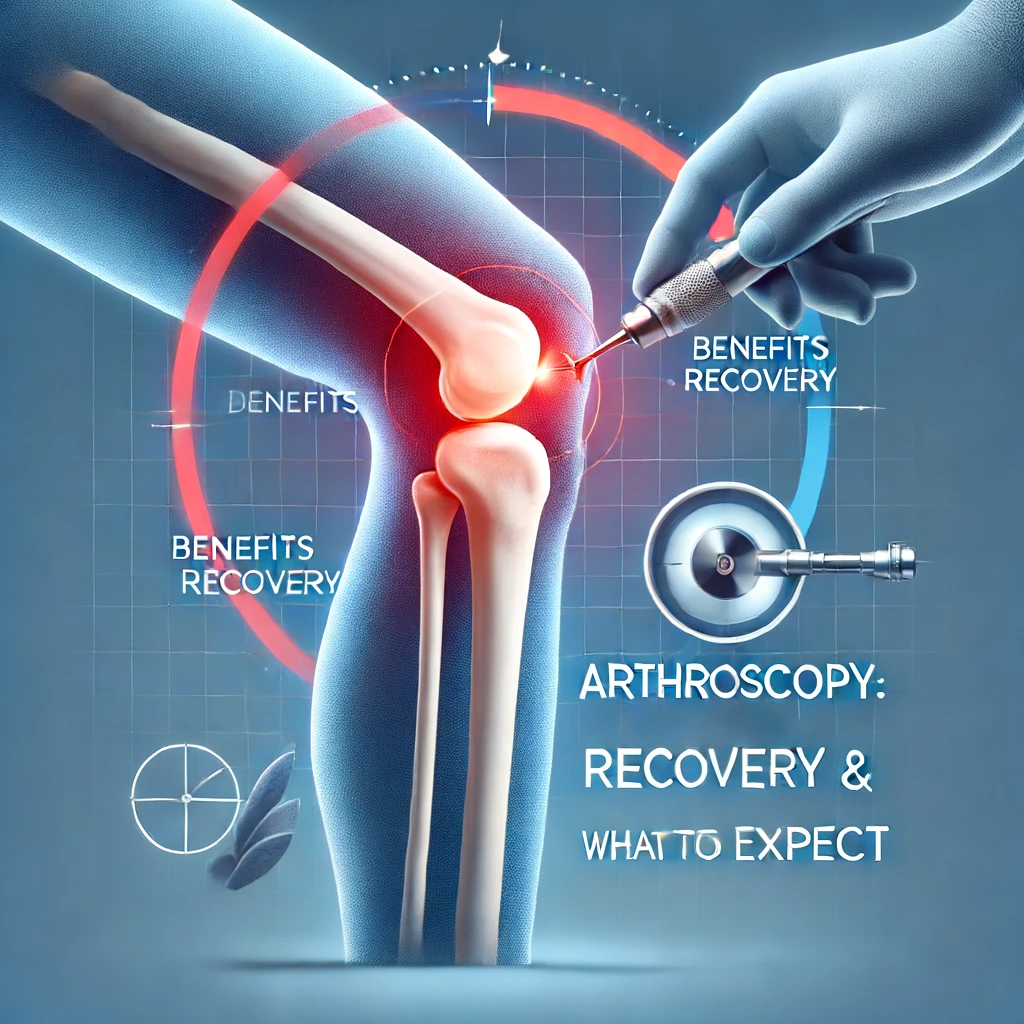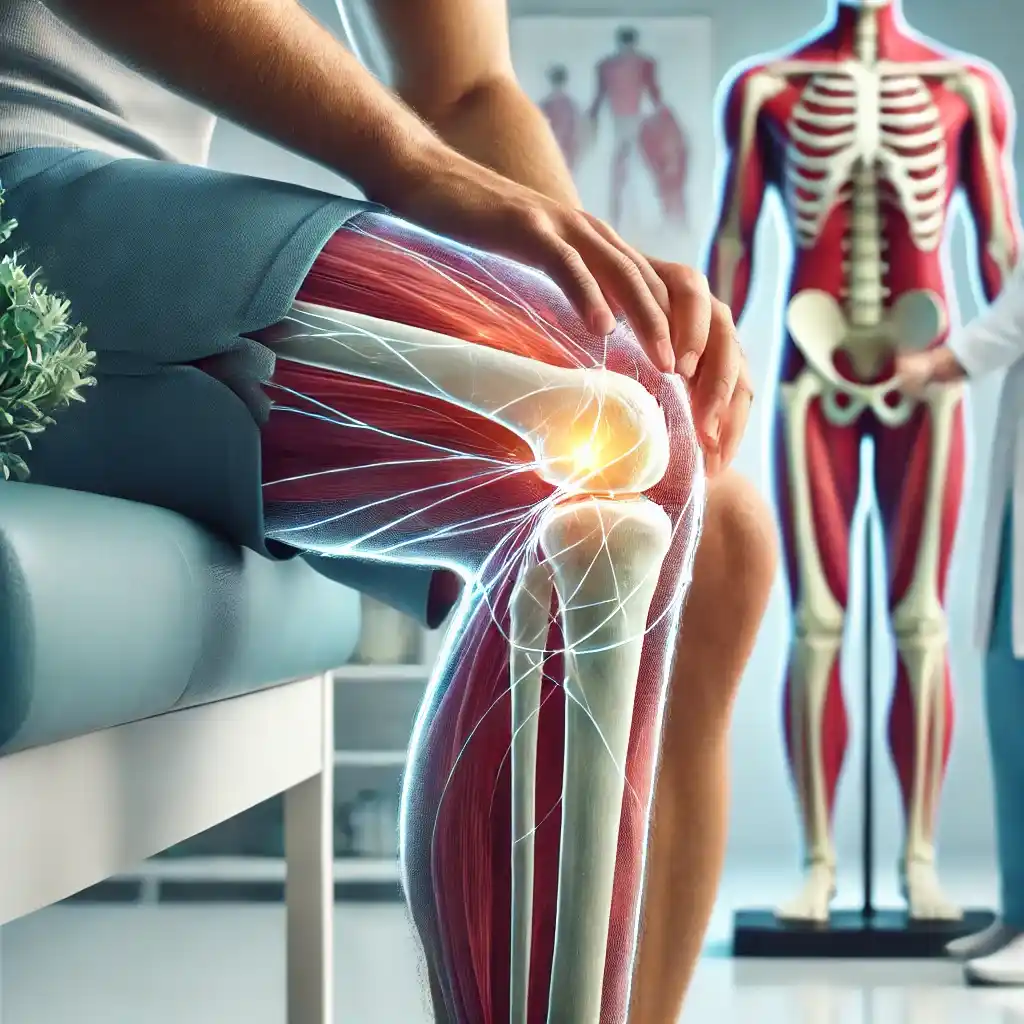
Table of Contents
Joint pain and mobility issues can significantly affect your quality of life. Whether you’re an athlete recovering from an injury or someone dealing with chronic joint pain, understanding your treatment options is crucial. One such option that has gained popularity over the years is arthroscopy. But what exactly is it? How does it work, and what can you expect from the procedure? In this article, we’ll delve into the details of arthroscopy, covering its benefits, recovery process and everything you need to know to make an informed decision about your joint health.
What is Arthroscopy?
Definition and Purpose
Arthroscopy is a minimally invasive surgical procedure used to diagnose and treat problems inside a joint. It involves the insertion of a small camera, called an arthroscope, into the joint through a small incision. This allows doctors to view the inside of the joint on a screen and perform necessary surgical repairs using specialized instruments.
How It Works
The arthroscope transmits a live video feed to a monitor, giving the surgeon a clear view of the joint’s interior. This visual aid helps in diagnosing issues such as torn cartilage, damaged ligaments, or joint inflammation. The procedure is often preferred over traditional open surgery due to its less invasive nature and quicker recovery times.
Common Reasons for Arthroscopy
Diagnostic Use
Arthroscopy is often used when other diagnostic tools, like X-rays or MRIs, do not provide a clear picture of the joint problem. It allows for a closer look at the cartilage, ligaments and other joint structures, making it easier to diagnose issues accurately.
Surgical Interventions
In addition to diagnostics, arthroscopy can be used to perform surgical interventions. Common procedures include repairing or removing torn cartilage, ligament reconstruction and treating joint infections. The minimally invasive approach reduces the risk of complications and speeds up the healing process.
Conditions Treated with Arthroscopy
Knee Issues
Arthroscopy is widely used to address knee problems, such as meniscus tears, ligament injuries (like ACL tears) and cartilage damage. It can also help in diagnosing unexplained knee pain.
Shoulder Problems
For shoulder conditions, arthroscopy can treat rotator cuff tears, shoulder impingement and recurrent shoulder dislocations. It’s also useful for removing loose bodies and repairing labral tears.
Wrist and Ankle Conditions
Arthroscopy can address wrist issues like carpal tunnel syndrome and ganglion cysts. In the ankle, it’s used for treating ligament injuries, bone spurs and arthritis.
Hip and Elbow Disorders
In the hip, arthroscopy can treat labral tears and impingement. For the elbow, it’s effective in treating tennis elbow, removing loose bodies and repairing damaged cartilage.
Benefits of Arthroscopy
Minimally Invasive Nature
One of the main advantages of arthroscopy is that it’s less invasive than traditional open surgery. This means smaller incisions, less tissue damage and a lower risk of infection.
Shorter Recovery Time
Because arthroscopy is minimally invasive, patients often experience shorter recovery times compared to open surgery. This allows for a quicker return to daily activities and sports.
Reduced Pain and Scarring
The smaller incisions used in arthroscopy result in less postoperative pain and minimal scarring, making it a more aesthetically pleasing option for patients.
The Arthroscopy Procedure
Preoperative Preparations
Before the procedure, you will have a consultation with your surgeon to discuss your medical history and any medications you’re taking. Preoperative tests may include blood work and imaging studies.
During the Procedure
Arthroscopy is typically performed under local, regional or general anesthesia, depending on the joint involved and the complexity of the procedure. The surgeon makes small incisions around the joint to insert the arthroscope and surgical instruments.
Postoperative Care
After the procedure, the incisions are closed with stitches or steri-strips. You’ll be monitored in the recovery room until the anesthesia wears off, and you’ll receive instructions on how to care for the surgical site.
Preparing for Arthroscopy
Consultation with Your Doctor
A thorough consultation with your doctor is crucial. They will explain the procedure, discuss potential risks and ensure that you are a suitable candidate for arthroscopy.
Pre-Surgery Instructions
You may need to stop taking certain medications before the surgery and follow fasting instructions. Your doctor will provide specific guidelines based on your individual case.
What to Expect During Arthroscopy
Anesthesia and Sedation
Depending on the procedure, you may receive local anesthesia to numb the area, regional anesthesia to numb a larger area or general anesthesia to put you to sleep.
Procedure Duration
Arthroscopy typically takes between 30 minutes to 2 hours, depending on the complexity of the condition being treated. The duration will vary based on the joint involved and the nature of the surgical repair.
Immediate Post-Procedure Care
After the procedure, you’ll spend some time in the recovery area. Most patients can go home the same day, but you’ll need someone to drive you due to the effects of anesthesia.
Recovery After Arthroscopy
Initial Recovery Phase
During the initial recovery phase, you’ll need to rest and keep the affected joint elevated. Ice packs can help reduce swelling and pain.
Long-Term Recovery and Rehabilitation
Long-term recovery involves physical therapy to restore joint function and strength. Your doctor will give you a rehabilitation plan tailored to your specific needs.
Physical Therapy
Physical therapy plays a crucial role in recovery. It helps improve joint mobility, rebuild muscle strength and ensures a smoother return to normal activities.
Potential Risks and Complications
Infection
Though rare, there is a risk of infection with any surgical procedure. Following your doctor’s instructions on wound care can help minimize this risk.
Blood Clots
Blood clots are another potential complication, especially in the lower extremities. Your doctor may recommend blood-thinning medications or exercises to reduce this risk.
Nerve or Tissue Damage
While rare, there is a risk of nerve or tissue damage during arthroscopy. This can lead to temporary or permanent issues, depending on the severity.
Postoperative Care and Follow-Up
Pain Management
Pain management is essential for a smooth recovery. Your doctor may prescribe pain medications or recommend over-the-counter options.
Wound Care
Proper wound care involves keeping the surgical site clean and dry. You’ll receive specific instructions on how to care for your incisions at home.
Activity Restrictions
You’ll need to avoid strenuous activities and follow your doctor’s recommendations on when to resume normal activities. Gradual reintroduction of movement is key to preventing complications.
Comparing Arthroscopy to Open Surgery
Invasiveness
Arthroscopy is less invasive than open surgery, which typically involves larger incisions and more extensive tissue disruption.
Recovery Time
Recovery time for arthroscopy is generally shorter compared to open surgery. This means less downtime and a quicker return to daily activities.
Outcome and Effectiveness
Both procedures can be effective, but arthroscopy offers the advantage of less pain, smaller scars and a quicker recovery in many cases.
Cost and Accessibility
Cost Factors
The cost of arthroscopy can vary depending on the joint involved, the complexity of the procedure, and geographic location. It’s generally more cost-effective than open surgery due to shorter hospital stays and quicker recovery.
Insurance Coverage
Most insurance plans cover arthroscopy if deemed medically necessary. Check with your provider to understand your coverage and any out-of-pocket costs.
Future of Arthroscopy
Technological Advances
Technological advancements are continually improving the precision and effectiveness of arthroscopic procedures. Innovations such as 3D imaging and robotic assistance are making surgeries more efficient.
Innovative Techniques
New techniques and tools are being developed to expand the capabilities of arthroscopy, making it applicable to a broader range of conditions and improving patient outcomes.
Conclusion
Arthroscopy offers a minimally invasive option for diagnosing and treating joint problems. Its benefits include reduced pain, shorter recovery times, and less scarring compared to traditional open surgery. By understanding what to expect from the procedure and the recovery process, you can make informed decisions about your joint health. Always consult with your healthcare provider to determine if arthroscopy is the right choice for your condition.
FAQs
Is arthroscopy painful?
Arthroscopy is generally associated with less pain compared to open surgery, but some discomfort is normal. Pain management strategies will be provided by your doctor.
How long does recovery from arthroscopy take?
Recovery time varies depending on the joint and the specific procedure, but most patients can resume normal activities within a few weeks.
Can arthroscopy be used for all joint issues?
Arthroscopy is suitable for many joint problems but not all. Your doctor can determine if it’s appropriate for your specific condition.
What should I avoid after arthroscopy?
Avoid strenuous activities and follow your doctor’s guidelines on rest and rehabilitation to ensure a smooth recovery.
How do I know if arthroscopy is right for me?
Consult with your healthcare provider to discuss your symptoms, medical history and treatment options to determine if arthroscopy is suitable for you.




One thought on “Arthroscopy Explained: Benefits, Recovery and What to Expect”